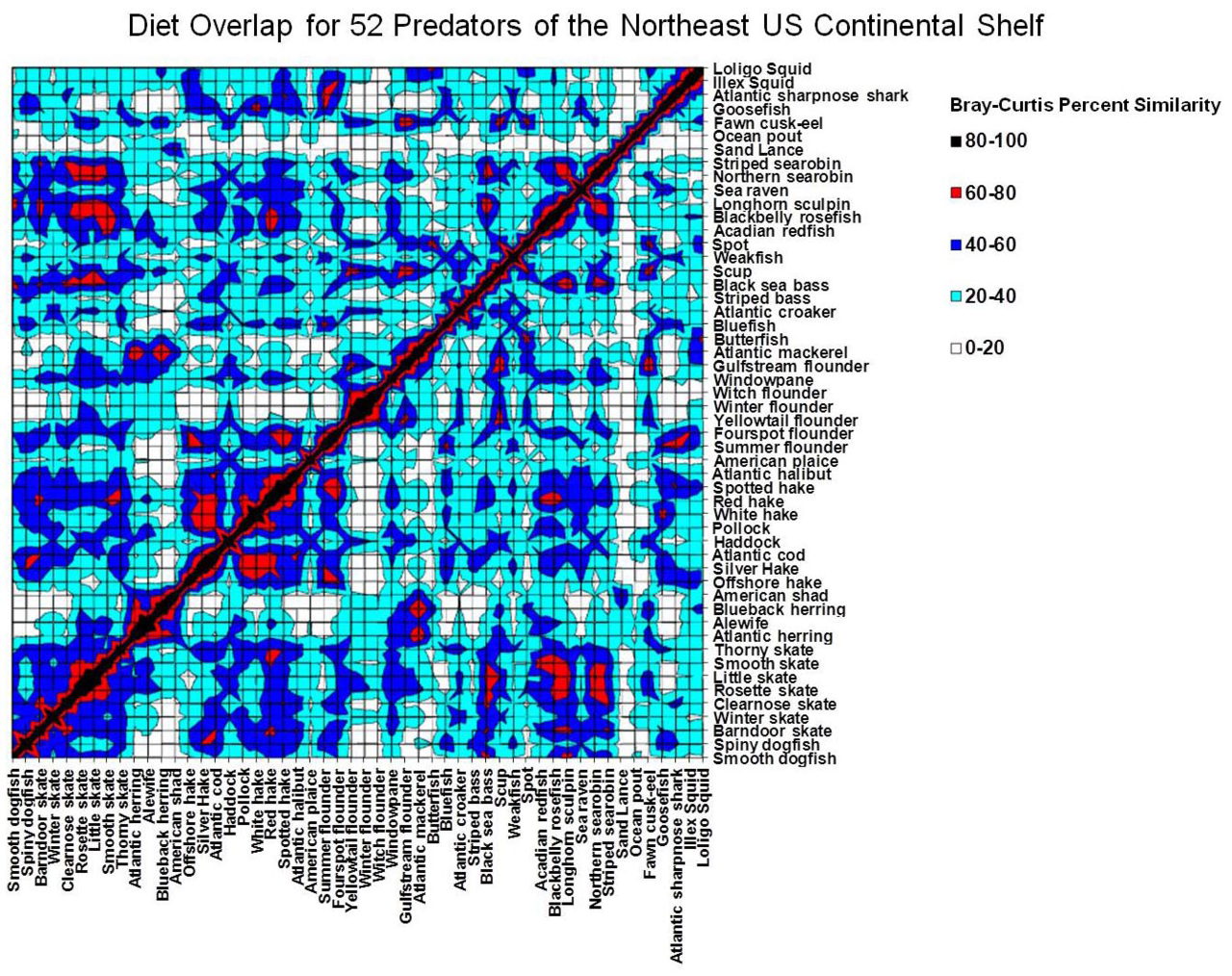Food Web Dynamics: Products and Analyses
Our primary objectives are to measure fish trophic (feeding) interactions of the Northeast U.S. continental shelf ecosystem. Our emphasis is on fish near the ocean bottom and middle of the ocean and commercially-important invertebrates.
The program has four levels of products and analyses.
Basic Level - Food Web Dynamics
We produce species profiles (descriptors of who's eating who) across life histories of these fish including simple diet parameters (e.g. frequency of occurrence for particular prey, diet composition, the total amount of food consumed, diet overlap matrices, guilds, clustering by diet, etc.). These are basically data summaries, exploratory, and observational analyses, and provide most of the information included in multi-species comparisons and similar reports.


Inferential/Retrospective - Food Web Dynamics
We examine what has happened to the fish community of the northeast U.S. continental shelf with time-series modeling; hypothesis testing for differences across geographic regions, decades, depths, size classes, predators, etc.; and multivariate analyses. Examples include:
- Changes in diet overlap and other estimates of competition among selected species.
- Community interaction matrices.
- The association between select benthivores and benthic habitats on Georges Bank in response to bottom fishing disturbance.
- Life history phases of key fish (in terms of trophic ecology) and essential fish habitat.
- The magnitude of predation on larval fish, especially gadids, by Atlantic herring (Clupea harengus) and Atlantic mackerel (Scomber scombrus).
- Differential (predation) mortality based upon size.
- Consumption estimates of the fish community, contrasted with fishery landings.
Predictive/Modeling - Food Web Dynamics
Based upon our knowledge of the fish community, what will likely happen to the multi-species yield dynamics and community composition? We use short-term forecasts, time series forecasts, empirical / statistical modeling, and develop mechanistic / deterministic models. These methods are both static and dynamic to provide instantaneous solutions and to link growth with predation and fishing to assess yield across time. A major objective is to contrast fishing versus natural mortality. One goal is to produce predictive models of fish biomass to address "What if..?" scenarios.
Examples include:
- Generalized Consumption Models.
- Cross-linking population dynamics between predator and prey populations (F versus M for key species).
- Predator-prey interaction models.
Theoretical - Food Web Dynamics

The current structure of the fish community of this continental shelf region has responded to multiple perturbations (e.g. harvesting and habitat degradation) over time. Why has the fish community responded the way it has? We produce generalized consumption estimates for key species with a theoretical examination of several approaches verified with field data. We are also interested in monitoring patterns that contribute to basic ecological principles observed from fish trophic interactions.